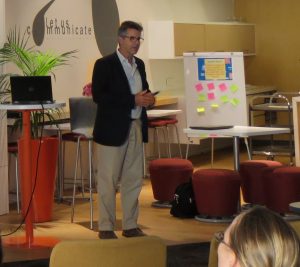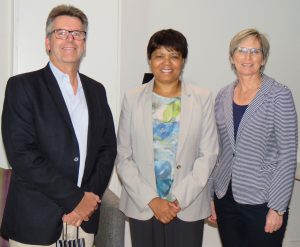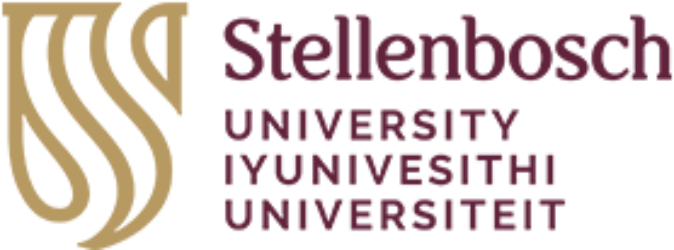 During Library Research Week, Glenn Truran, Director of SANLiC (the South African National Library Consortium), shed light on the current situation regarding open access publishing globally.
During Library Research Week, Glenn Truran, Director of SANLiC (the South African National Library Consortium), shed light on the current situation regarding open access publishing globally.
Glenn reminded the audience that we are still using a centuries-old model for communicating research which, once published, is hidden behind a paywall of annual subscription fees.
About 20 years ago, publishers started to move individual journals into journal packages (the so-called “big deals”) in order to provide libraries access to more electronic journals. This, however, is a double-edged sword. The benefit is that by paying a little bit more libraries suddenly have access to far more electronic resources than they would otherwise have been able to afford. The drawback is that big deals gradually can take up an increasingly larger portion of a library’s collection budget, leaving less funds for other resources.
However, while libraries are struggling, publishers continue to prosper. Glenn illustrated how Elsevier, the biggest publisher in the world, averaged an annual profit of 36,7% over the past 9 years.
In response to this situation, the Open Access movement started some years ago, with the aim of making research available online, free of the requirement to subscribe to a resource to obtain access. Open access did not grow as quickly as everyone had hoped, but in recent years a number of new initiatives have emerged around the globe, all with the intention of forcing publishers to change the way in which research publication is funded. For example, in July 2017 German universities cancelled their subscriptions to Elsevier’s ScienceDirect, and in the subsequent two years Sweden and the University of California did the same.
In September 2018, cOAlition S announced Plan S which requires that, from 2020 onwards, scientific publications that result from research funded by public grants provided by participating national and European research councils and funding bodies must be published in journals or on platforms compliant with open access. In February 2019 cOAlition S welcomed its first African member (the National Science Council of Zambia) and the African Academy of Sciences expressed support for Plan S.
In December 2018, representatives of 37 countries signed the 14th Berlin Declaration, committing to
- authors retaining their copyright,
- complete and immediate open access, and
- accelerating the progress of open access through transformative agreements that are temporary and transitional, with a shift to full open access within a few years.
 According to this statement these agreements should, at least initially, be cost-neutral, with the expectation that economic adjustments will follow as the markets transform. Publishers are expected to work with all members of the global research community to effect complete and immediate open access upon publication.
According to this statement these agreements should, at least initially, be cost-neutral, with the expectation that economic adjustments will follow as the markets transform. Publishers are expected to work with all members of the global research community to effect complete and immediate open access upon publication.
South Africa was represented by USAf, ASSAf, the NRF, DST, DHET and SANLiC. Afterwards USAf produced a briefing document, which includes a draft roadmap to guide South Africa’s negotiations towards open access to scholarly journals. The document ends with:
The success of the OA2020 campaigns in other national systems is driven by the level of consensus that exists in those scholarly communities. This requires engagement and discussion. There is need for urgency since the negotiations for the next set of contracts have already begun.
 In his response to Glenn’s talk, Prof Michael Cherry of the Department of Botany and Zoology at Stellenbosch University agreed with Glenn about the value of and the need for open access publishing, but also lamented the fact that it was expensive and therefore difficult for researchers to afford.
In his response to Glenn’s talk, Prof Michael Cherry of the Department of Botany and Zoology at Stellenbosch University agreed with Glenn about the value of and the need for open access publishing, but also lamented the fact that it was expensive and therefore difficult for researchers to afford.

Naomi Visser
